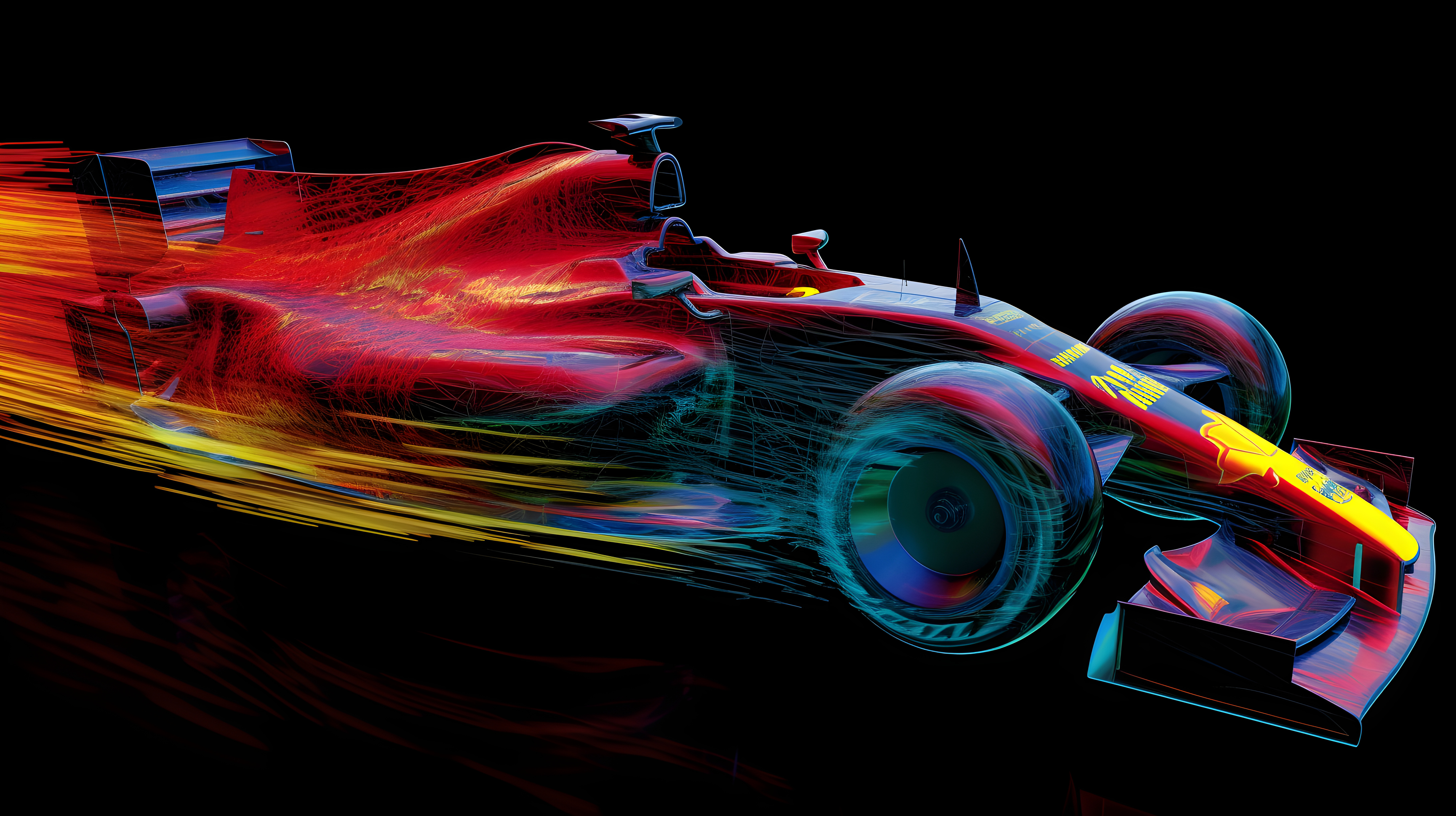Intersection of Multi-Physics and Artificial Intelligence

In order to understand the ways in which artificial intelligence (AI) and multi-physics are connected, we must first delve into the world of multi-physics and how it is applied in practice.
Multi-Physics in the real-world
Multi-physics refers to the simultaneous simulation of different physical phenomena. These phenomena are identified by their different physical laws or equations, thereby requiring different sets of parameters and initial conditions. This interaction of multiple physical processes can be found in many real-world systems, emphasising the importance of multi-physics.
Let’s take a racing car as an example. The car requires an efficient combustion model for its engine. It also requires a hydrodynamic model to reduce its drag, but it also needs cooling air for its engine, which increases drag. The interplay of these factors into a global model is what we call multi-physics.
There are also many examples of multi-physics within the fusion industry. The interaction of a plasma with the confinement wall is a typical example. The plasma must be kept hot to sustain a fusion reaction, but it should be contained within a surface that must remain cold enough to maintain its structural strength.
Multi-physics simulations are very challenging. Assumptions made within one model may be inconsistent with those of another model, making error quantification and predictive power problematic.
Bringing AI and Multi-Physics together
Artificial intelligence can assist these multi-physics simulations by providing relations between different physics models that are difficult to infer otherwise. For example, if we refer to the fusion scenario from earlier, it is imperative that the plasma physics module and the wall material module talk to each other but this isn’t easy in practice. Each module requires the solution of lengthy simulations, which isn’t feasible.
In reality, the wall ablation is described by some approximate model, which is constructed by piecing together a combination of simple theory and experimental data. This is where AI can help; it can create a faster and more accurate approximation just by looking at these simple theories and data. This is how artificial intelligence and machine learning are applied to the world of multi-physics, specifically fusion.
The Discovery Platform
This is where the power of the Discovery Platform becomes clear. By connecting different simulations together into a common infrastructure, we can evaluate which changes from one simulation are impacting the other. This also opens up the Discovery Platform’s capabilities in the future, as it could allow for two or more simulators to be chained together on the same interface as well as providing a tool for the generation of suitable surrogates with considerable increase in efficiency.
For example, one simulator could be used for the fusion plasma while the other simulator focuses on modelling the plasma-wall interactions. Outputs from the latter will then feed into the inputs of the former, thus allowing for proper feedback. This could then score a particular quantity of interest while changing the various system parameters in order to optimise such quantity of interest, via a Monte Carlo analysis for example. However, while all of this is technically possible, it would be very difficult to perform if the two simulators are expensive to run.
In comes the Discovery Platform, which could be used to generate an emulator for one (or both) of the simulators and the above analysis could be made significantly faster. Suppose one could connect multiple surrogate models and perform parameters’ exploration at many orders of magnitude increased speed. With such a solution, a significantly more prominent parameters’ space could be covered, producing a higher-quality product.
These multi-physics applications are not limited to fusion either, so the possibilities are endless. By bringing together AI and multi-physics, the Discovery Platform allows one to chain simulations together in a seamless manner and through an integrated platform that is built for optimisation and uncertainty verification.
